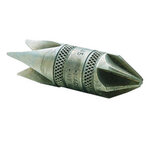mdwilliams999
Member
I was wondering if anyone had any friendly advice when pressing pen kits together. Not that I have never had a pen crack on other pen kits, but the slimline pens seem to give me the biggest problem. Mostly with certain woods. African Blackwood is probably the worst, though I have had some issues with a few others as weel (Bloodwood for example).
I understand impact of humidity on wood, having parts appropriately aligned, taking your time, making sure the brass tube is clean and free of anything that could create to much pressure (like CA glue on the inside of the tube.
Does anyone have any other helpful tips? I was wondering if for example the fit on the slimlines is just a tad to tight or is there another "trade" secret" I'm not aware of. For the African Blackwood, I probably crack nearly 50% of them. I'm about to take it off the list of options for customers.
Thanks,
Mike
I understand impact of humidity on wood, having parts appropriately aligned, taking your time, making sure the brass tube is clean and free of anything that could create to much pressure (like CA glue on the inside of the tube.
Does anyone have any other helpful tips? I was wondering if for example the fit on the slimlines is just a tad to tight or is there another "trade" secret" I'm not aware of. For the African Blackwood, I probably crack nearly 50% of them. I'm about to take it off the list of options for customers.
Thanks,
Mike

